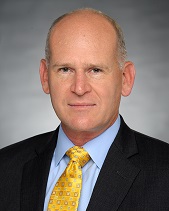It’s increasingly clear that the public health crisis created by COVID-19 has exacerbated long-term, structural challenges in the U.S. health system. This is particularly true for how health care is delivered and clinicians, especially physicians, are paid. The pandemic has also highlighted the wisdom of seizing opportunities for innovation and reinvention, as well as the benefits to providers of learning to engage and succeed in capitation and other global risk arrangements.
In 2022, health care providers need to balance ongoing day-to-day crisis management with decisive and bold strategic planning and execution. Scroll to read about all five strategic priorities or click on any individual trend to learn more about the issue and solutions:
- There will be an accelerated uptake of global risk arrangements.
- Workforce development requires both short-term initiatives and sustainable strategies.
- Achieving equality depends on addressing SDoH and expanding mental health services.
- Provider networks need to focus on both physical visits and telemedicine.
- M&A will continue apace, with some caveats.
Pandemic advantages of capitated payments, plus CMS’ clear direction, will accelerate the uptake of global risk arrangements.
Some fee-for-service providers are still digging out from 2020 when volume and revenues dropped precipitously even as expenses rose. Despite American Rescue funds that provided some relief, primary care physicians, for example, lost an average of $67,774 in gross revenue per full-time physician in 2020, according to a Health Affairs report.
Yet providers operating under capitation continued receiving monthly member payments independent of volume. Meanwhile, the Centers for Medicare & Medicaid Services (CMS) pledged to move every Medicare beneficiary and most Medicaid beneficiaries to programs that are accountable for quality and total cost of care by 2030.
In 2022, providers will need to think more like payers and beyond their current footprint when it comes to risk contracting. Hospitals must decide if they are efficient enough to put inpatient operations into risk arrangements or if they will focus primarily on their physician network. Similarly, physicians must move more fully into population health management and preventative care–beyond simply ensuring members receive annual physicals, for example.
In all cases, providers need to determine what part of the care continuum they want to directly control and whether to build, buy or outsource to obtain the infrastructure for managing total cost of care and population health. The necessary infrastructure includes data analytics and tools, utilization management, care management and network management.
Workforce development requires both short-term initiatives and sustainable strategies.
Providers are on the front lines of the Great Resignation and competition for talent. The pandemic has further strained pre-COVID health care workforce shortages and burnout.
Yet providers cannot afford to focus solely on filling immediate openings. Value-based care requires new skills, knowledge and behaviors. Attracting and keeping clinicians and allied health professionals for all roles, plus non-clinical employees, demands new approaches to recruitment, retention, training and career development.
What’s needed is a two-pronged approach: Take good care of your existing workforce and simultaneously create a “pipeline” of future employees to meet the changing role-based needs.
For your existing workforce:
- Invest in skill, career and professional development, creating career and professional ladders that include training and professional school programs deeply aligned with your culture and needs.
- Update care models and workflows to maximize utilization and positive experience for providers and other team members.
- Add burnout reduction and retention programs that make employees want to stay.
To build a future workforce:
- Design programs targeting future employees and providers that educate them about your organization, health care as an industry and options for careers or professions.
- Develop cost-effective training for entry-level and tech positions including medical assistants, care navigators, surgical techs and other non-licensed staff.
- Create residencies/fellowships for recent graduates from licensed programs such as pharmacy, registered nurse, advanced practitioners and others.
Adventist Health, for one, is not letting COVID-19 force it off-track from the long-term workforce development plan that it launched shortly before the pandemic hit. To learn more, see Adventist Health is Building Its Future Workforce Now.
Achieving equality depends on addressing SDoH and expanding mental health services.
In addition to championing the transition to provider risk arrangements, CMS also is prioritizing social determinants of health (SDoH), health equity and access, all of which will improve under population health management. There are more and more data showing the outsized impact of SDoH on people’s health status and spend. However, most payer/provider contracts do not incentivize nor empower providers to close SDoH care gaps.
The Centers for Medicare & Medicaid Innovation has made advancing health equity a strategic objective in all programmatic decisions and a key part of its vision for the future. The goal is to integrate addressing of SDoH within the ongoing transition to more value-based payment agreements in which providers are taking risk, both for Medicare and Medicaid.
For providers taking risk, success requires integrating SDoH data into analytics, network strategy and care models. Another effective strategy is to add federally qualified health centers to clinically integrated networks (CINs) or independent physician associations (IPAs) if they’re not already contracted. That way, both the contracted primary care network and local community-based organizations can provide non-medical services that can close SDoH gaps.
Provider networks need to focus on both physical visits and telemedicine.
There’s been a rapid return to in-person visits, nearing pre-COVID levels in many areas of the country. While clearly important, telehealth and other digital innovations are not yet going to replace most physical visits.
Health systems, hospitals, and medical groups have no time to lose in leveraging their strengths and expertise to build out easy access, high-performing provider networks. These efforts need to include aligning with the right partners, putting the necessary infrastructure and technology in place, and incenting and training clinicians and other employees to change behaviors, protocols and processes.
M&A will continue apace, with some caveats.
Some non-traditional players will continue to purchase their way into health care while payers buy more providers and providers acquire other providers. Still, the Biden Administration has signaled greater scrutiny for some mergers and acquisitions, such as UnitedHealth’s proposed purchase of Change Healthcare. And rising prices for providers could deter some buyers.
Providers need to assess whether buying other providers is the best strategy for achieving their goals. Forming CINs that share data and financial risk can often be a good alternative to pricy M&A.
In 2022, the persistent pandemic and its ripple effects will continue to dominate the daily lives of providers, whether that’s treating COVID patients, scrambling to fill open positions or caring for non-COVID patients who often are sicker because they postponed medical attention. But providers must also bring discipline and purpose to setting up their organizations for longer-term success. For both challenges and opportunities in 2022 and beyond, the answer will most often lie with accelerating the shift to valued-based care and payments, including building the essential experience and infrastructure to succeed.
To help you assess and pursue 2022 priorities, please contact info@copehealthsolutions.com.


